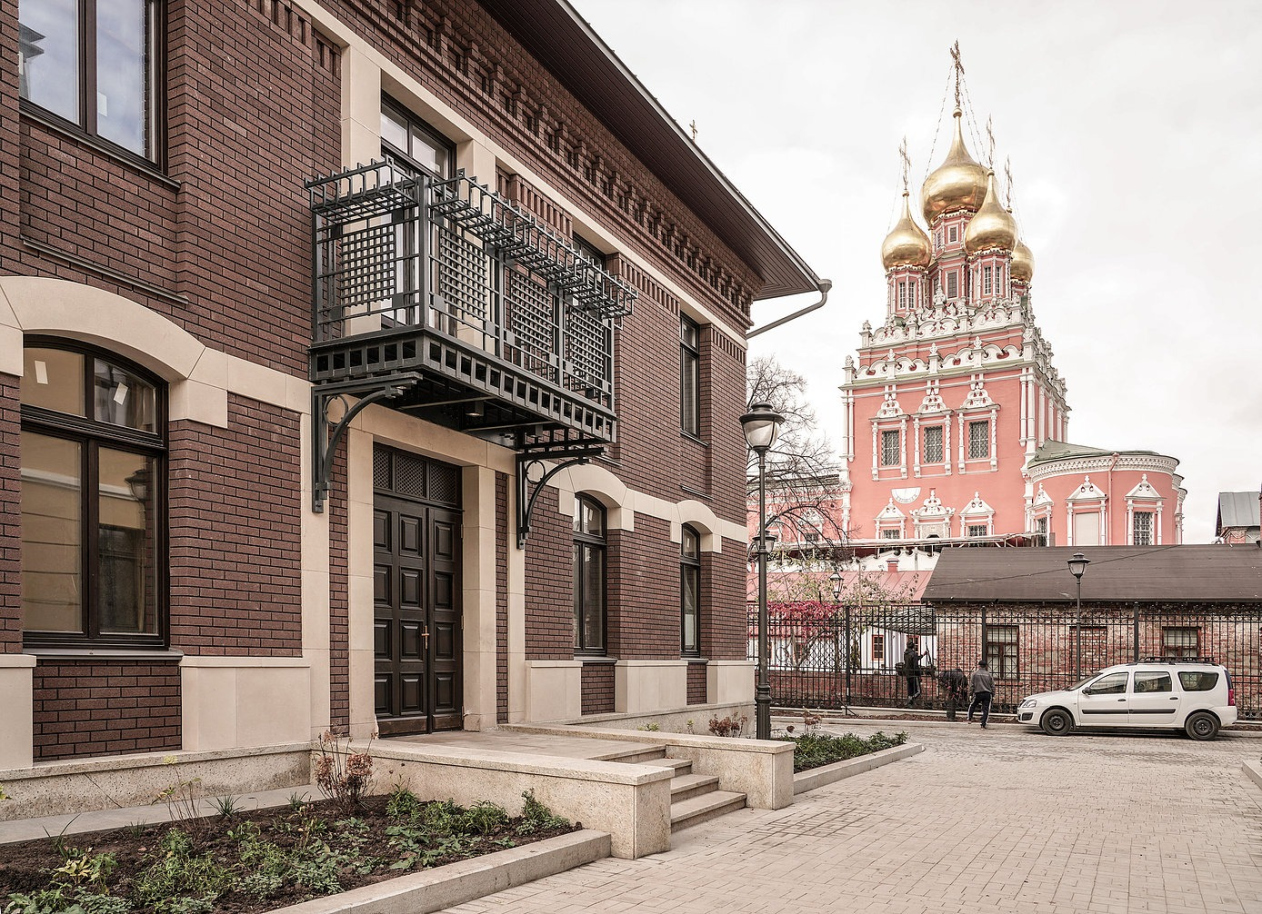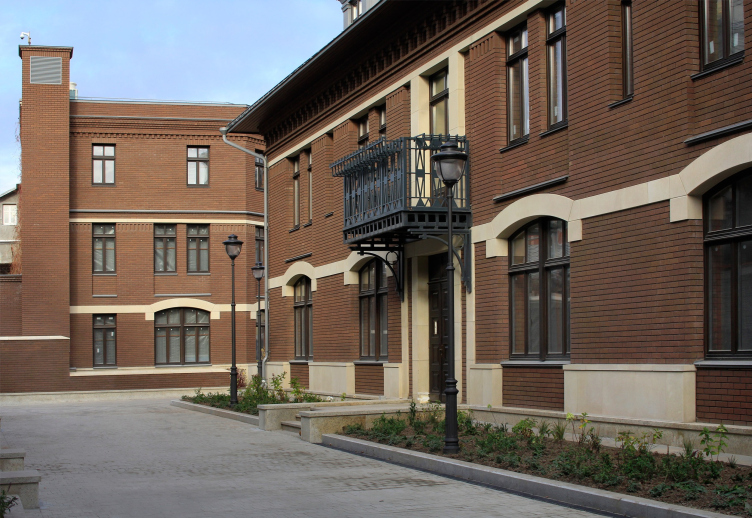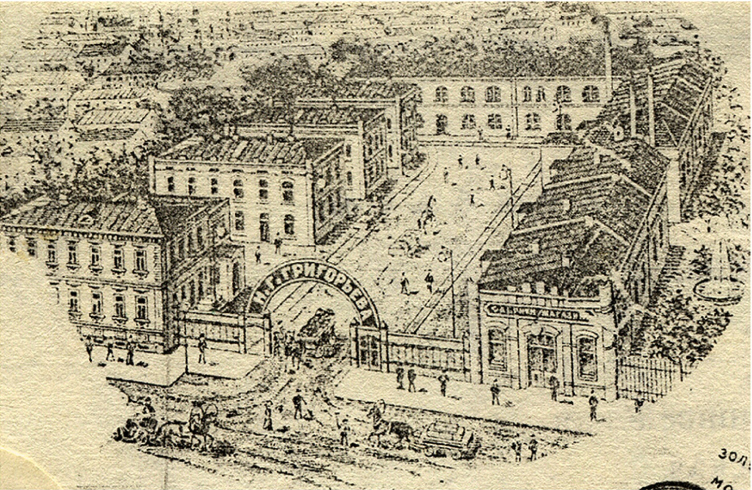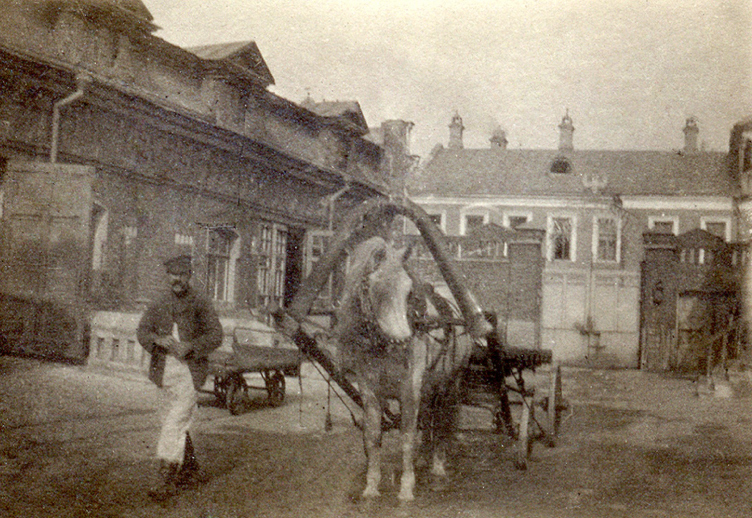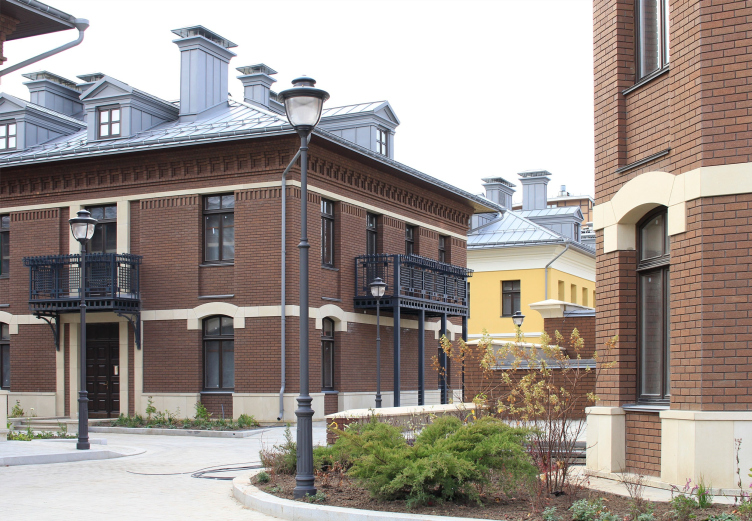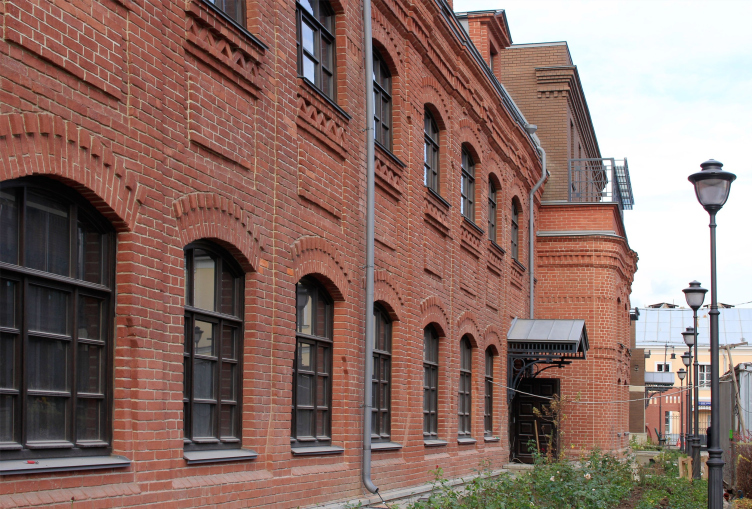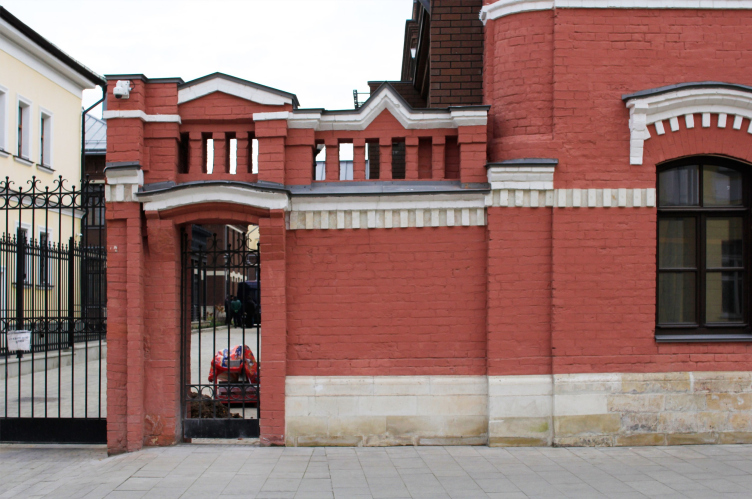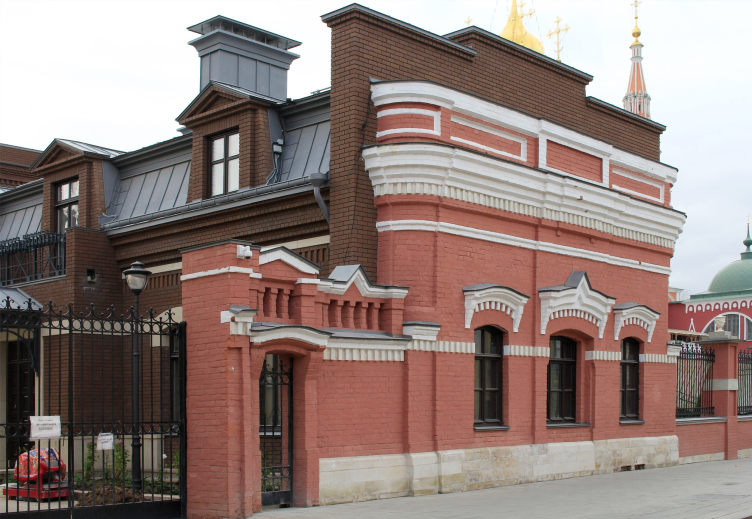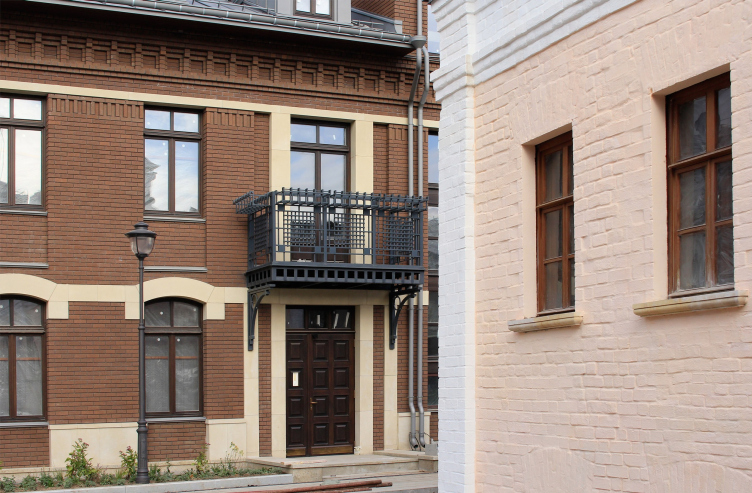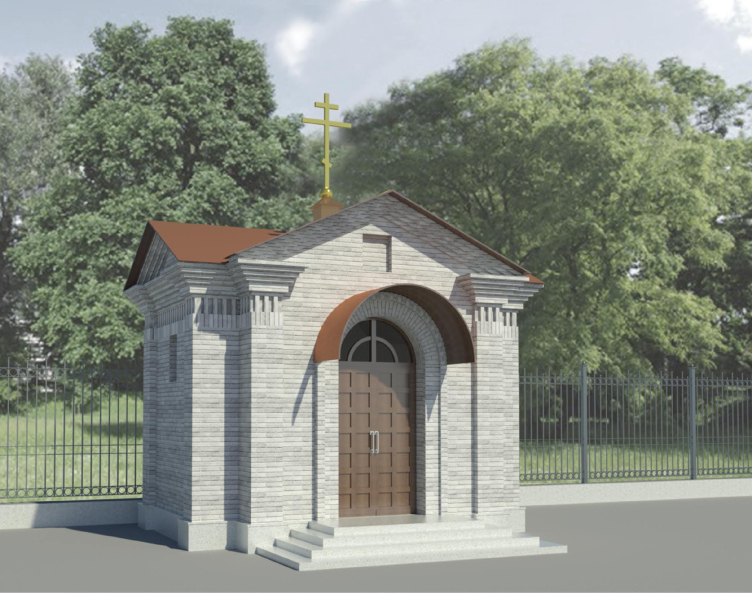The final project was supported by the local preservation activists, and in 2015 it passed the examination by the chief architect of Moscow, Sergey Kuznetsov.
This story is amazing in every respect: from the cancellation of the project by the mayor to the unexpected approval thereof – it turns out that one side does realize that building large-scale monsters next to a monument of architecture is an atrocity, yet it sort of does not fully realize it, while the other side agrees that something needs to be built here, all the more so because, when the scandal broke out, some of the apartments in this high-end residential complex in the center of Moscow were already sold (one cannot say that all of the problems were solved at once – Father Superior Alexander Saltykov continued his struggle against the construction as such, yet still, there was some sort of a ceasefire; see the interview with Ilia Utkin). The solution of the situation seemed to be the perfect, almost exemplary one. Since that time, there were a lot of changes, hopes, and disappointments; one could say that Moscow’s preservation of monuments has been through a very difficult decade with a beginning, a middle, and an end. As for the complex that caused so much controversy back in the day, it was finally completed last year – currently, they are cleaning up the land around it, liberally decorating it with various plants. We visited Kadashi together with the author of the project, Ilia Utkin, a convinced traditionalist, a “paper” architect, and a person who got an award of the Venice Architecture Biennale for a series of photos of ruins – and examined the end result.
We enter the complex from the north, from the 2nd Kadashevsky Lane; or from the west, from the 1st – the new housing complex encircles the Kadashi Resurrection Church with its corner, following its main street: almost in the middle, it makes a 90-degree turn, which forms a small plaza lying before the main preserved and restored monument of architecture, the Olenev Chambers, which still keep the vaults of the XVII and XVIII centuries.
The residential buildings stand at a right angle to the main street with small branches between them; one can walk around some of the units – the structure of the master plan is quite clear, yet one can wander around for quite a while here. Because the main strong side of the urban space that has been formed inside the new housing complex is, of course, the views: of the Resurrection Church, and of the Kremlin with Ivan the Great Bell Tower. These two are not always present; rather, they suddenly open up in the perspective: what is consistent, however, is the fact that we always find ourselves in some peaceful and integral urban environment, occasionally seeing a bright landmark in between the houses – which constitutes a very “Moscow” effect of space perception; in this city, monuments of architecture oftentimes spring out of nowhere, without any spatial preparation, and the accidental character of the side scenes, from which we peek out in this or that case, is also a part of the game.
The author of the project, Ilia Utkin, was facing a lot of tasks: to keep and partially even restore the old structures that were not yet demolished during the moment of heated discussion, to find the optimum scale that would fit the place and stay within the regeneration limits, to find the style that would have logical justification, and, finally, find the basis for the integrity of the new fragment of city environment – a land plot with a complex outline and a few historical inclusions. And, although, while working in a historical environment, the architects chiefly pay attention to the preserved monuments, the visual integrity and the emotional qualities of the freshly built architecture are also very important and are much more than just a backdrop.
The residential complex “Metsenat” in Kadashi / architect: Ilia Utkin
Copyright: Photograph: Julia Tarabarina, Archi.ru
The residential complex “Metsenat” in Kadashi / architect: Ilia Utkin
Copyright: Photograph: Julia Tarabarina, Archi.ru
In this specific case, the author chose a style that is historically conditioned: in the late XIX century, this land was occupied by the Grigoryev Sausage Factory (which was later replaced by the Soviet experimental can factory) – low-rise squatting brick buildings with simple ornaments, characteristic for the historicist industrial construction of those days, such as dentils and square decorative brickwork.
“The land around the temple was essentially a rural production area: they would cut pigs here and make sausage – Ilia Utkin was explaining in 2013, justifying his decision to stick to “merchant” industrial architecture as an offset to the then-considered proposal that consisted of houses with columns – Next to the sausage factory, its owner built a large manor house, and there was a sausage store in the Kadashevsky lane. The workers from the factory lived in the mansards of the factory’s residential buildings, very densely packed. There was a special spirit about this place”.
Some of the factory buildings stood so close to one another that in the Soviet time they were covered by a single roof – and this is how a conglomerate of differently aged structures appeared, something that would be totally unthinkable nowadays, at least because of fire safety reasons: the spaces between the houses must be enough for at least one fire truck. However, from the pictures of the factory we can see that some of its buildings to the left of the 2nd Kadashevsky lane were standing in a row parallel to the lane – meaning, in about the same way as today’s buildings of the housing complex.
Grigoryev Factory. The entrance
Copyright: © provided by U-Studio
Thus, the basic image was defined by the industrial architecture of the XIX century, but the new buildings could not be, of course, fully identical to the factory buildings of the old days – the office function was cancelled still by Yuri Luzhkov back in 2010; today, this is a high-end complex in the center of Moscow, which simply cannot look like a factory. This is why the style of the old industrial architecture got an injection of “merchant” architecture, which is also historically correct for Zamoskvorechye. This is how the metal balconies came about, looking like cast-iron ones of the XIX century. The ventilating equipment is arranged in a semblance of chimneys, which looks quite traditional against the background of the hip roofs of steep pitch, and makes quite a good match for the mansards, whose outline was also borrowed from the industrial architecture – even though the mansards cannot be considered to be quite a “Moscow” element, they did occur in the architecture of this city from time to time, and here it is precisely the case when they are appropriate.
Grigoryev Factory. View from the yard
Copyright: © provided by U-Studio
The residential complex “Metsenat” in Kadashi / architect: Ilia Utkin
Copyright: Photograph: Julia Tarabarina, Archi.ru
Meanwhile, the architecture of the new residential buildings looks neater and more organized than that of the industrial buildings of the turn of the centuries: the overall impression is to a large extent defined by the dark-brown brick that looks somewhat like Art Nouveau tiles and just as neat, supported by broad bow-shaped cornices above the windows, made from fiber cement looking like white stone, inserted into smooth interfloor fasciae – all of this rather belongs to the early XX than to the late XIX century, while the pristine light verticals framing the entrances refer us to even more recent years, somewhere near the 1930’s. Generally, the result is something like a cross between industrial architecture and an Art Nouveau mansion, with a twist of Rome’s Piazza Augusto Imperatore. The industrial architecture lends the brick and the right composition of densely standing buildings, the mansion lends a graceful curve of the cornices and the “cast iron” balconies, the Piazza Augusto Imperatore lends an organized feel, unusual for the merchant Moscow, yet quite appropriate in a modern housing complex. After all, the architects also had to emphasize the fact that the complex is actually a modern construction to make sure people don’t confuse it with a fake – this is what the Venetian Charter demands – a new volume must be visually different than a historical one.
In this case, the required difference is beautifully observed. One must begin with the source of inspiration, the only surviving factory building – it is partially preserved and partially restored. The brick is traditional red, unlike the brown in the newly built houses. According to the modern principle of working with the industrial heritage, the facades were cleared up and covered with water resistant substance, so we can not only admire the texture, but also watch various brickwork mismatches, which make this building, once simple and purely utilitarian, a living monument of its time. This building is also residential, yet what makes it different is the fact that in some places its top floors include two-level apartments with mansards.
The residential complex “Metsenat” in Kadashi / architect: Ilia Utkin
Copyright: Photograph: Julia Tarabarina, Archi.ru
The residential complex “Metsenat” in Kadashi / architect: Ilia Utkin
Copyright: Photograph: Julia Tarabarina, Archi.ru
The factory building is stretched along the inner street behind the gate on the 2nd Kadashevsky Lane, the gate itself being completely restored. Now it marks the border of the complex along the lane, at the same time emphasizing the fact that it does belong to the old Moscow with its inevitable gate before every piece of real estate. What was also restored was the facade of the sausage store of the Grigoryev factory – currently, this is the only place where the new architecture meets the old one in a straight cut; the new dark brick house bears an old facade. Unlike the inner building, whose brick is cleared in full accordance with the trends of “loft” architecture, the gate and the facade that face the street are left painted in a Moscow way. This solution must be recognized to be the right one because if we are to keep the visual appearance of the side-street, then we must keep all of its traditions; the cleared brick would have been too much of an obvious thing here.
The residential complex “Metsenat” in Kadashi / architect: Ilia Utkin
Copyright: Photograph: Julia Tarabarina, Archi.ru
The residential complex “Metsenat” in Kadashi / architect: Ilia Utkin
Copyright: Photograph: Julia Tarabarina, Archi.ru
The most ancient building, the one with the deepest “roots” was dug out from its cultural layer; around it, quite recognizable areaways appeared, unambiguously indicating its historical value. The house is also different in its color – it’s white-pink – and the textured irregularity of the brickwork, which helps to emphasize the age of the walls, many times rebuilt. This building will become the city mansion.
The residential complex “Metsenat” in Kadashi / architect: Ilia Utkin
Copyright: Photograph: Julia Tarabarina, Archi.ru
Another story has to do with yet another construction that drops off the overall color range – the yellowing volume is situated approximately where the deacon’s house used to be, on the line of Kadashevsky dead end street, between two new buildings. The house was torn down in the summer of 2010, which caused a storm of protests from the parish, yet it had been refused the status of an architectural monument at least twice, and during the designing process it belonged to the client who owned this land. In a word, the deacon’s house (former merchant’s) was torn down, and the current building, its color different from the rest of the complex, serves as a reminder about it, at the same time making the construction sparser, and creating an impression as if these buildings were constructed at different times, not because of the architect’s whim, but motivated by the history of this place.
Still another micro-story: the factory building northeast of the church served as a chapel that was used by the revived parish; the building was torn down in the process of construction of the housing complex, yet the client built in this place a new chapel, also designed by Ilia Utkin, in simple classical forms, aimed at avoiding any kind of conflict with the architecture of the main church.
Project of the chapel on the territory of the Resurrection Church. The residential complex “Metsenat” in Kadashi
Copyright © U-Studio
It must be said that these historical and memorial inclusions do a lot of good to the housing complex: their presence substantially softens up its visual appearance and adds to its emotional content, saving the buildings from turning into a totally alien spot. These elements, just as unpredictable as motivated, falling out of the overall rhythm, with which they only occasionally resonate – I would say that these elements, although they do stand in the ranks, only stand “at ease”, thus producing the effect of the old town, if not of the “ancient Moscow” construction, however new this embodiment can be. But this embodiment, together with its complicated history, still looks like a positive experience. The complex’s website proudly displays fragments of a garden of the Versailles type, the lawns are being planted, the streets are paved with stones, and are nice and quiet – it would be great if the complex, in spite of the expensiveness of its real property, was open to the city, but this is probably up to the client and to the city authorities.
Speaking of the architecture of the complex, this is definitely a true experience of regeneration – a genre that was once much talked about, yet the examples of which were not really quite successful. Here, however, thanks to the participation of Ilia Utkin with his love and passion for the old town, and, partially, thanks to the long history of protests from the local preservation activists, the result actually marches its official original definition – which means more than a lot for modern Moscow.

